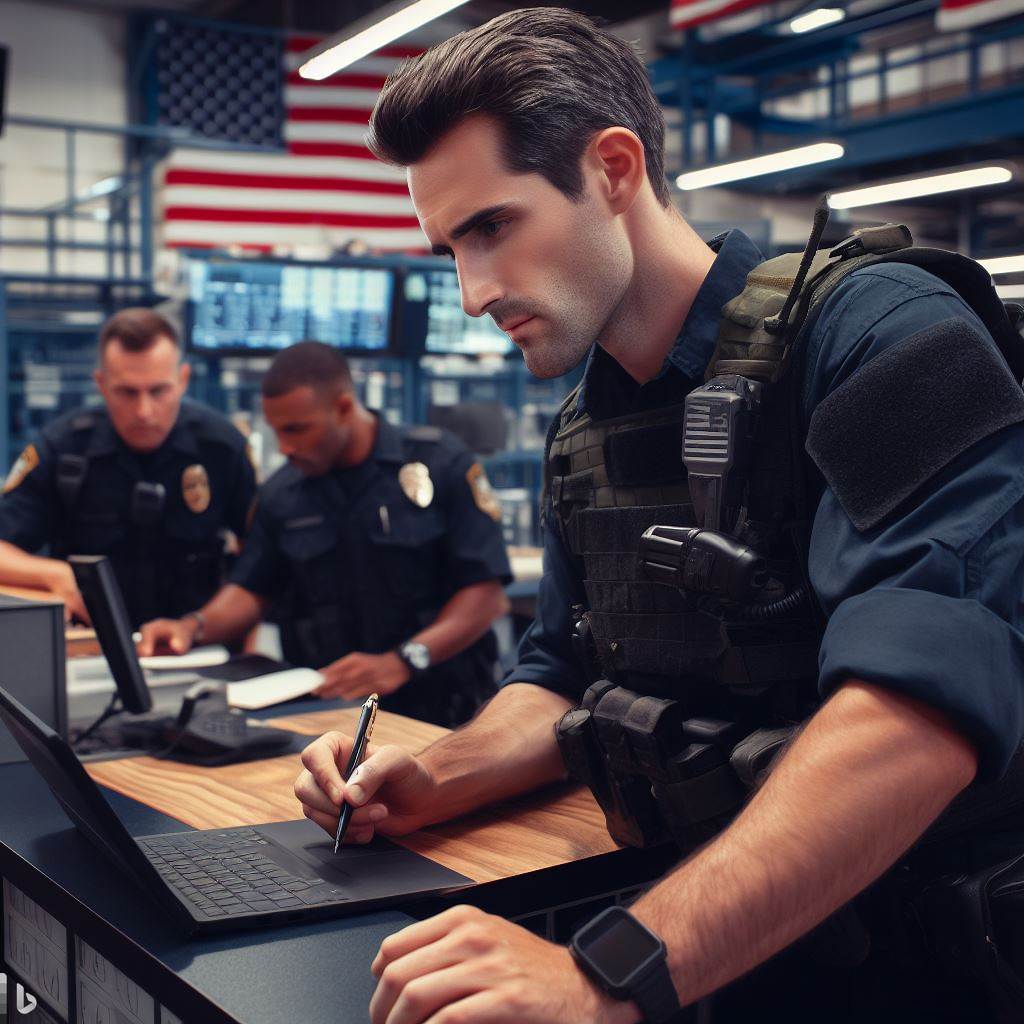Introduction
A. Surviving High-Risk Scenarios
Facing high-risk scenarios demands resilience and knowledge. This blog post explores crucial survival tips in challenging situations.
B. Tips from U.S. Fire Vets
Learn battle-tested strategies from seasoned U.S. fire veterans who’ve tackled extreme situations with precision and skill.
C. Importance of Learning from Professionals
- Expertise Matters: In high-stakes situations, insights from those who’ve been there are invaluable.
- Real-World Wisdom: Veterans bring practical wisdom, honed through experience, offering lessons beyond textbooks.
- Applied Knowledge: Knowing how professionals navigate risk can empower anyone in unpredictable situations.
- Lifesaving Techniques: Discover tried-and-true methods that have saved lives, straight from those who implemented them.
- Mental Preparedness: Learn not just survival techniques but also the mindset that keeps experts focused and effective.
Prepare to glean insights from the best—U.S. fire veterans—and enhance your ability to thrive in high-risk scenarios.
Preparing Mentally
A. Significance of mental preparedness in high-risk scenarios
In high-risk scenarios, mental preparedness plays a crucial role in ensuring survival and success.
Being mentally prepared can help individuals stay focused, make quick decisions, and overcome obstacles.
U.S. fire veterans have shared valuable advice on developing mental resilience in such situations.
B. Importance of staying calm and focused during emergencies
Staying calm and focused during emergencies is of utmost importance.
Panic and anxiety can cloud judgment and hinder the ability to think clearly.
U.S. fire veterans emphasize the significance of maintaining a composed mindset in order to effectively tackle challenging situations.
C. Tips for managing stress and anxiety in high-pressure situations
Mastering stress and anxiety in high-pressure situations is a trainable skill, stressed by U.S. fire veterans.
They advocate self-care and exercises like deep breathing. Mental resilience is critical in risky situations; U.S. fire veterans advise positive self-talk, building support networks, and setting achievable goals.
Mental preparedness includes understanding potential risks, as highlighted by U.S. fire veterans who stress thorough research and staying informed.
A positive mindset is crucial in facing danger; U.S. fire veterans recommend staying optimistic and focusing on tasks at hand.
Visualization techniques, suggested by U.S. fire veterans, involve picturing successful outcomes and rehearsing emergency scenarios for mental readiness.
Developing mental resilience is an ongoing process; U.S. fire veterans encourage learning from experiences and constant self-reflection.
Adaptability is key in high-risk scenarios; U.S. fire veterans suggest embracing flexibility and a problem-solving attitude.
Peer and mentor support enhances mental resilience; U.S. fire veterans emphasize seeking guidance and sharing experiences.
Mental preparedness is vital in high-risk scenarios, according to U.S. fire veterans.
Their advice underscores the importance of mental resilience, stress management, and a positive mindset.
By following these tips, individuals can enhance their ability to navigate challenging situations effectively.
Remember, mental preparedness is crucial for survival and success in high-risk scenarios.
Physical Fitness
Physical fitness plays a crucial role in surviving high-risk scenarios, especially for firefighters who face specific physical demands.
Here, we will discuss the importance of physical fitness and provide workout routines and training tips recommended by U.S. fire veterans.
Additionally, we will delve into strategies for maintaining strength, endurance, and flexibility in high-intensity situations.
Transform Your Career Today
Unlock a personalized career strategy that drives real results. Get tailored advice and a roadmap designed just for you.
Start NowA. Role of physical fitness in surviving high-risk scenarios
Physical fitness is key to surviving high-risk scenarios.
It not only enhances overall health but also equips individuals with the strength, agility, and endurance necessary to handle demanding situations effectively.
For firefighters, being physically fit can mean the difference between life and death.
B. Specific physical demands faced by firefighters
Firefighters encounter numerous physical demands on the job.
These include carrying heavy equipment, climbing ladders, dragging hoses, and navigating through challenging terrain.
They must also endure extreme temperatures and withstand the physical toll of long hours spent battling fires and rescuing individuals.
C. Workout routines and training tips recommended by U.S. fire veterans
U.S. fire veterans offer valuable insights into maintaining optimal physical fitness.
They often emphasize the importance of a well-rounded training regimen that incorporates cardiovascular exercises, strength training, and flexibility workouts.
Interval training, which combines bursts of high-intensity activity with recovery periods, is particularly effective in simulating the unpredictable nature of firefighting scenarios.
D. Provide information on maintaining strength, endurance, and flexibility
Maintaining strength is critical for firefighters to handle heavy equipment and perform physically demanding tasks.
Strength training exercises, such as weightlifting and bodyweight workouts, help build and preserve muscle mass.
Endurance is equally important to ensure firefighters do not exhaust easily during long shifts or challenging situations.
Incorporating aerobic exercises, like running or cycling, into their routines increases stamina and cardiovascular fitness.
Flexibility is crucial to prevent injuries and ensure firefighters can maneuver through confined spaces.
Regular stretching exercises, such as yoga or Pilates, improve flexibility and help maintain a full range of motion.
E. The importance of a balanced diet and rest:
In addition to physical fitness, firefighters must focus on maintaining a balanced diet and prioritizing rest to support their overall well-being.
Proper nutrition fuels their bodies, providing the energy needed to perform physically demanding tasks.
Adequate rest and recovery time are also essential to prevent burnout and promote physical and mental resilience.
In summary, physical fitness is a fundamental aspect of surviving high-risk scenarios, particularly for firefighters.
By prioritizing physical fitness and following the recommended workout routines and training tips shared by U.S. fire veterans, individuals can enhance their strength, endurance, and flexibility.
Combined with a balanced diet and ample rest, these efforts contribute to their ability to navigate and overcome the physical challenges encountered in high-risk situations.
Read: The Role of the U.S. Coast Guard: Beyond Sea Rescues
Situational Awareness
Situational awareness is a critical skill in high-risk scenarios.
It involves being fully aware of one’s surroundings, identifying potential dangers, and assessing risks to make informed decisions.
U.S. fire veterans have developed effective techniques to maintain situational awareness and stay alert in challenging situations.
Here are some tips for enhancing situational awareness:
1. Be observant
- Pay attention to details and constantly scan your environment.
- Notice changes, such as unusual sounds, smells, or movements.
- Look for signs of potential hazards, such as smoke, fire, or structural weaknesses.
2. Trust your instincts
- Gut feelings are often the result of subconscious processing of information.
- If something feels wrong, investigate further and trust your intuition.
3. Avoid complacency
- High-risk situations can become routine over time, leading to complacency.
- Stay vigilant and avoid becoming too comfortable or overly confident.
4. Practice mental rehearsal
- Visualize different scenarios and mentally prepare for potential risks.
- Rehearsing responses in your mind helps build muscle memory and improves reaction time.
5. Utilize technology
- Stay updated with the latest tools and technologies that aid situational awareness.
- From thermal imaging cameras to communication devices, these technologies can provide valuable information in real-time.
6. Effective communication
- Maintain open lines of communication with your team members.
- Share observations, concerns, and ideas to collectively maintain situational awareness.
- Clear and concise communication can save lives in high-risk scenarios.
7. Develop a safety mindset:
- Prioritize safety at all times and cultivate a safety-focused mindset.
- Be proactive in identifying and mitigating potential risks before they escalate.
8. Continual learning and training
- Stay updated with the latest techniques and strategies in high-risk scenarios.
- Regular training sessions and drills help reinforce situational awareness skills.
9. Trust your team
- Teamwork plays a crucial role in maintaining situational awareness.
- Rely on your colleagues, trust their expertise, and coordinate effectively.
10. Stay physically and mentally fit
- Physical and mental well-being contribute to situational awareness.
- Get enough rest, exercise regularly, and take care of your mental health.
In high-risk scenarios, situational awareness can mean the difference between life and death.
By following these tips and techniques used by U.S. fire veterans, individuals can enhance their ability to stay alert, identify potential dangers, and assess risks effectively.
Prioritizing situational awareness and continuously practicing these skills will help ensure personal safety and the safety of those around us.
Read: Financial Planning for U.S. Military Personnel & Families

Discover More: U.S. Security Guard Licensing: Steps and Requirements Explained
Safety Protocols
When it comes to high-risk situations, following essential safety protocols is crucial.
U.S. fire veterans have recommended specific safety measures to ensure the well-being of individuals involved.
Additionally, proper usage of personal protective equipment (PPE) plays a vital role in minimizing risks.
Showcase Your Business Today
Reach thousands of readers actively exploring professional services. Publish your business profile and grow your audience now.
Publish NowA. Enumerating Essential Safety Protocols
- Always assess the situation before taking any action to identify potential risks.
- Ensure clear communication and coordination with team members to maintain safety.
- Establish designated evacuation routes and emergency assembly points beforehand.
- Regularly inspect and maintain equipment to ensure its proper functioning when needed.
- Implement strict guidelines regarding fire safety, including proper usage and storage of flammable materials.
B. Specific Safety Measures Recommended by U.S. Fire Veterans
- Conduct thorough risk assessments and hazard evaluations before entering a high-risk situation.
- Constantly update and practice emergency response plans to ensure preparedness.
- Use technology, such as thermal imaging cameras, to detect and locate individuals in hazardous environments.
- Establish a strong incident command system to maintain effective communication and coordination.
- Train team members in advanced first aid techniques to provide immediate medical assistance when required.
C. Personal Protective Equipment (PPE) and Its Proper Usage
Personal protective equipment is essential for maintaining safety in high-risk scenarios.
Here are some key points about PPE:
- PPE includes items such as helmets, goggles, gloves, masks, and protective clothing.
- Each piece of PPE serves a specific purpose, such as protecting against heat, chemicals, or impact.
- Proper training on the correct usage, donning, and doffing of PPE is crucial.
- Inspect PPE regularly to ensure it is in good condition and replace any damaged or expired items.
- Ensure a proper fit of PPE for each individual to maximize its effectiveness.
D. The Importance of Regular Training and Practice for Effective Safety Protocols
Regular training and practice are essential for the effective implementation of safety protocols.
Here’s why:
- Training helps individuals understand potential risks and how to mitigate them.
- Practice drills enable individuals to respond efficiently and calmly in emergency situations.
- Training fosters situational awareness and helps individuals make quick and informed decisions.
- Training sessions provide opportunities to identify areas for improvement and update protocols accordingly.
- Consistent training enhances teamwork and coordination among team members.
To sum it up, strict adherence to safety protocols is necessary in high-risk scenarios.
Following essential safety protocols, implementing measures recommended by U.S. fire veterans, utilizing protective equipment, and investing in regular training reduces risks, improving overall safety levels.
These practices are crucial for firefighter safety, risk reduction, and emergency preparedness.
Read: Military Technology: Tools of the Modern American Soldier
Learn More: Detective Associations in the USA: Networking and Support
Find Out More: Balancing Family Life as a Firefighter: Real Stories
Decision-Making Skills
In high-risk scenarios, decisions can be life-altering. U.S. fire veterans emphasize the critical nature of decision-making, urging swift and effective choices.
Here are insights and tips to enhance your decision-making skills under pressure:
A. Critical Nature of Decision-Making
- Decisions in high-risk situations shape outcomes.
- Split-second choices impact safety and success.
- Immediate action often defines survival.
B. Advice from U.S. Fire Veterans
- Trust your training—veterans stress its value.
- Maintain situational awareness for informed decisions.
- Don’t hesitate; indecision can escalate danger.
- Prioritize actions based on urgency and impact.
- Learn from experiences, yours and others’.
C. Assessing Priorities and Understanding Consequences
- Identify immediate threats for prompt response.
- Understand the ripple effects of each decision.
- Weigh risks versus benefits before acting.
- Anticipate potential outcomes to minimize surprises.
- Reevaluate priorities as situations evolve.
D. Tips for Improving Decision-Making Under Pressure
- Practice decision-making in simulated scenarios.
- Enhance adaptability to handle the unexpected.
- Develop a mental checklist for quick assessments.
- Stay calm; panic clouds judgment.
- Foster teamwork for collaborative decision-making.
In high-risk scenarios, the ability to make decisive choices is paramount.
U.S. fire veterans emphasize the importance of training, situational awareness, and learning from experiences.
Assessing priorities and understanding consequences help navigate complex situations.
To improve decision-making skills under pressure, practice, adaptability, and teamwork are key.
Remember, in critical moments, your decisions can be the difference between survival and adversity.
Read: Women in the U.S. Military: Breaking Barriers & Traditions
Find Out More: Historical Evolution of Detectives in the United States
Conclusion
The blog post highlighted valuable tips provided by U.S. fire veterans on surviving high-risk scenarios.
By learning from experienced professionals, readers can gain essential insights that can be applied in their own lives.
The importance of listening to those who have firsthand experience in dangerous situations cannot be overstated.
These veterans have faced adversity and have valuable knowledge to share.
By implementing the tips shared by U.S. fire veterans, individuals can enhance their preparedness and ability to navigate high-risk scenarios.
The guidance provided can make a significant difference in both personal and professional life.
It is crucial to embrace a mindset of resilience and determination when faced with high-risk situations.
By staying calm, focused, and adaptable, one can overcome challenges that may arise.
Surviving high-risk scenarios not only requires practical skills but also mental strength.
The experiences of these veterans serve as a reminder that with the right mindset and preparation, anyone can overcome adversity.
Ultimately, the blog post aims to inspire readers to apply the wisdom shared by U.S. fire veterans, reminding them that they have the power to overcome obstacles and thrive in high-risk situations.
By adopting their techniques, individuals can increase their chances of success and ensure their safety in challenging circumstances.
Remember, in the face of uncertainty and danger, resilience and determination are key.
[E-Books for Sale]
The Big Book of 500 High-Paying Jobs in America: Unlock Your Earning Potential
$19.99 • 500 High-Paying Jobs • 330 pages
Explore 500 high-paying jobs in America and learn how to boost your career, earn more, and achieve success!
See All 500 High-Paying Jobs of this E-Book
1001 Professions Without a Degree: High-Paying American Jobs You Can Start Now
$19.99 • 1001 Professions Without a Degree • 174 pages
Discover 1001 high-paying jobs without a degree! Unlock career tips, skills, and success strategies for just $19.99!




